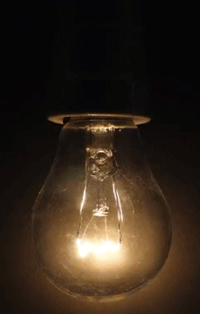The Alliance for Solid-State Illumination Systems and Technologies (ASSIST), a program of the Lighting Research Center (LRC) at Rensselaer Polytechnic Institute, has released a publication that proposes a new method of evaluating human perception of directly observed light source flicker. The publication, ASSIST recommends…Recommended Metric for Assessing the Direct Perception of Light Source Flicker, provides specific measurement procedures and calculations to objectively determine whether the amount of flicker from a light source is above or below the threshold of human perception. The metric is applicable to any waveform shape and frequency and is based on peer-reviewed laboratory and human factors experiments.
The increasing popularity of LED and solid-state lighting has led to a renewed interest in light source flicker and methods of evaluating the perception and acceptance of flicker. Compatibility of LED lamps with dimming circuits designed for incandescent lamps is an application of particular concern regarding flicker. Existing metrics, specifically percent flicker and flicker index, describe aspects of the physical waveform, says LRC senior research scientist Andrew Bierman, but do not relate it to human perception, nor do they include the frequency of the flicker, which is important to determining its perception.
 |
|
ASSIST has proposed a new measure for evaluating flicker in lights. (Photo Courtesy of LRC) |
“The purpose of the metric proposed is to accurately and objectively predict the perception of flicker for any lamp, regardless of its light output waveform or frequency,” said Bierman. Calculation of the metric starts with a relative light output waveform measurement and finishes with a single numerical result indicating whether the amount of flicker is above or below the threshold of human perception. Additionally, the result can be expressed as a probability of a viewer being able to detect flicker from a light source.
To validate the metric, 220 different waveforms were tested in a human factors experiment with 10 subjects to determine the flicker observation rate of each waveform and the metric’s ability to predict the observation. The metric also was used to predict the flicker perception of five previously untested commercial A-lamps. The flicker metric development and validation results are described in the paper, “A flicker perception metric,” which is now in press with Lighting Research and Technology journal (doi: 10.1177/1477153515581006).
Nadarajah Narendran, Ph.D., LRC director of research and organizer of the ASSIST program, notes that the goal of ASSIST’s proposed flicker metric is to give manufacturers a tool for evaluating their lamp designs for flicker. “The LRC and ASSIST’s industry members are interested in understanding flicker, its causes and solutions, and at what level it is detectable and acceptable to users,” said Dr. Narendran. He added that laboratories can easily create their own test setups based on this method to quantify the amount direct flicker produced by a light source.
The ASSIST recommends publication is available for free from the ASSIST website at http://www.lrc.rpi.edu/programs/solidstate/assist/recommends/flicker.asp. To further show the metric calculation procedure, also included for download are several waveform examples that can be used with the sample Matlab code included in the publication’s appendices. Also available online are two previous flicker publications from ASSIST dealing with the perception of indirect flicker, also known as stroboscopic effects.












